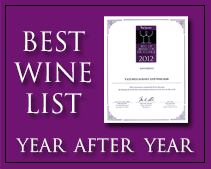Port Wine: rich red wine from northern Portugal turned out to be one of the world’s classic wines is an accident of history
Date: December 23, 2010
Best wine supplier in Philippines discusses wine related topics
About Port Wine which is fast becoming a popular wine in Philippines
That a rich red wine from northern Portugal turned out to be one of the world’s classic wines is an accident of history. Count Henry of Burgundy introduced into Portugal the French pinot noir vine. The rich red wine it produced was arguably the forerunner for the ports we know today.
Although appreciated in its country of origin, it was hardly known outside. Until the 17th century, French wines were infinitely more popular than wines from Portugal. However, by the end of the 17th century, relations between Britain and France had deteriorated so badly that the British government decided to impose heavy import duties on French wines, and the discovery was made that the wines from the Douro valley were to the taste of the British. The British had forsaken the wines of Bordeaux in favor of those coming from the Douro valley.
By the end of the next century, thousands of casks of Douro wine were regularly being shipped to Britain, and the practice had slowly developed of fortifying the wine with brandy to stop the fermentation process, producing a naturally sweet wine that travelled very well. This wine then came to be called port and even today its production is restricted to the Douro valley area, at the mouth of which is the city of Oporto, the port from which the classic wine got its name.
Port’s big impact came during the French Revolution and the Napoleonic Wars that followed. Since French wine was more or less unobtainable, the British took to port like ducks to water. Soon British wine merchants migrated to Portugal and established the famous port houses although others like the Irish, Danish, Dutch, and Germans were also involved in the industry.
Port can legally still only be produced in the Douro region within boundaries firmly delineated by the Portuguese government. It remains to this day the center of much of the world’s production.
The wine growing area is segmented into two regions: the Baixo, or so-called lower area, is flat and thus easier to cultivate, while the Cima, or upper area, is more steep and rugged and is said to produce a lower quantity but a higher quality of wine. The cultivation of grapes in Douro valley is no easy matter. It is a constant battle against the soil and the elements. The local climate is very hot in the summer months and often freezing cold in the winter. Also, the rocky soil has to be broken up with crow bars and even dynamited before the vines can be planted. The very steep terracing adds to the difficulties for the vine growers.
Port is a famously rich and delicious drink, but it is not just one wine. There is in fact a wide variety of styles to suit just about every palate. The most popular is Ruby port, which is matured for around three years in the cask and then bottled ready for drinking. Ruby port is a full, rich, and satisfying wine for everyday drinking. Reserve/Vintage character ports are made from higher quality vintage style wines and are matured in the wood for between four and five years. They are smoother than Ruby port. Late Bottled Vintage, similar to vintage character port, is a blend of higher quality wines, but the grapes must all come from the specified year. By law it has to spend four to six years in wood before it is bottled; this port has a rich color and bouquet and a fine depth of flavor. Vintage Port is the wine of a single year, which is bottled between 22 and 31 months after the harvest and then matures in the bottle for a minimum of ten years. Colheita are tawny ports that are sold with a vintage date on them (the date of harvest).
White port is made only from white grapes. It can be either dry or sweet and is at its best when served chilled. Tawny port is matured in wood for longer than ruby and assumes a brown tawny color. Aged tawnies are said to be aristocrats of port. Some tawnies are marked “Ten Years Old,” “Thirty Years Old,” or “Over Forty Years Old”. Tawnies are made by blending wines from different harvests. The named age is the average of all the ages of the wine that were blended to produce the tawny. They are matured for ten or more years in the cask and generally take on a light, tawny color and have a soft, slightly dry taste, which becomes more pronounced the older the port.
Three main factors account for the difference between one port and another:
• The quality of the grapes and the soil in which they are cultivated
• The blend of wines selected for each style of port
• Whether the port is matured in the bottle or in a wooden cask
Many people think of port as an after-dinner drink. However, the mellow smoothness of port makes it an ideal companion for a relaxed evening at home or at a bar. Dry white port can be served as a distinctive aperitif, and chilled tawny port, too, makes an attractive aperitif. Port is an ideal partner to cheese, walnuts, and Brazil nuts. The British reckon that Port and Stilton go together perfectly. It can be used to good effect in cooking such dishes as pork fillet.
Just like other fine wines, port is appreciated by afficinados as much through its appearance and bouquet as its taste. It is therefore suggested that it is wise to use a generous glass only partially filled rather than a small glass filled to the brim. The larger glass enables the port to be swirled around, releasing the aroma. One of the most unique and practiced traditions of serving port is at the dinner table, where the decanter or bottle is passed only to the left. How this custom originated is subject to considerable debate. Some historians believe it started in the British Royal Navy, where the word “port” means left. Others are advocates of the theory that passing clockwise signifies the direction of the sun.
There is no shortage of competition in the port market, and it certainly is possible to get quality for money by shopping around. Wine traders say the market is ripe for the emphasis on the medium-priced ports, including a blend such as old tawny, and sales figures do indicate a falling off in sales of the basic ruby/tawny/white end as well as at the top end of the market. The same market that encourages growers also gives the consumer the edge. Competition is the great equalizer. There are more than enough good ports available for the port lover never to feel victimized by money-grabbers and to enjoy what many experts consider the finest after dinner wine.
Source: http://www.allsands.com/history/objects/portwine_xqz_gn.htm
Are these articles useful for enhancing your wine and dine experience in the Philippines. Do they also help you with travel, leisure, vacation, dining out, nightlife and other leisure activities plans in Manila and other major cities of Philippines? Yats Restaurant hopes to provide you with ample information so you can plan your trips to Pampanga Angeles City Clark Freeport Zone whether you are travelling from Manila or other Asian countries such as Hong Kong, Shanghai, Singapore, Malaysia or Korea.
Restaurant reservations in Manila Philippines, planning of menu, selection of wine for dinner and booking a private function and event in Angeles City Clark Freeport Zone can all be handled. Yats Restaurant and Wine Bar has been regarded by many to be the premier restaurant north of Manila Philippines. Its 3000-line award-winning restaurant wine list has kept many wine lovers happy dining in this restaurant in Angeles City Clark Philippines for over a decade.
Yats Restaurant and Wine Bar was built by Hong Kong-based Yats International in 2000 to provide a world-class cozy fine dining restaurant, business meeting facilities and venues for private dinners and functions in Pampanga Angeles City Clark Freeport Zone. Pampanga Angeles City Clark Philippines was selected for this restaurant because of safety, clean air, absence of traffic and proximity to Manila and Subic.
For comments, inquiries and reservations, email Restaurant@Yats-International.com or call these numbers:
(045) 599-5600 0922-870-5178 0917-520-4401
Http://www.YatsRestaurant.com
Getting to this fine dining restaurant of Angeles City Clark Freeport Zone Pampanga Philippines
How to get to this fine-dining restaurant in Clark Philippines? Once you get to Clark Freeport, go straight until you hit Mimosa. After you enter Mimosa, stay on the left on Mimosa Drive, go past the Holiday Inn and Yats Restaurant (green top, independent 1-storey structure) is on your left. Just past the Yats Restaurant is the London Pub.
Restaurant waiters and servers aspiring to become good sommeliers in Philippines strive to earn a spot to train at the best wine restaurant in Philippines. Yats Restaurant and Wine Bar is well regarded by restaurants in Manila and Pampanga to be the best place to train to become a wine steward or sommelier. Yats is the only restaurant in the Philippines to earn the prestigious Best of Awards of Excellence for offering one of the best restaurant wine lists in the world.











